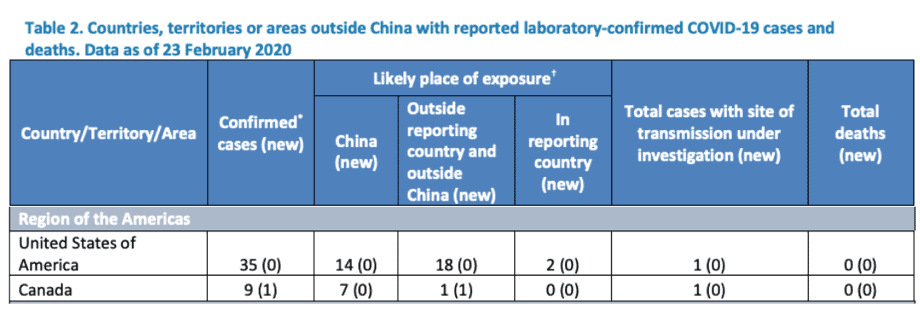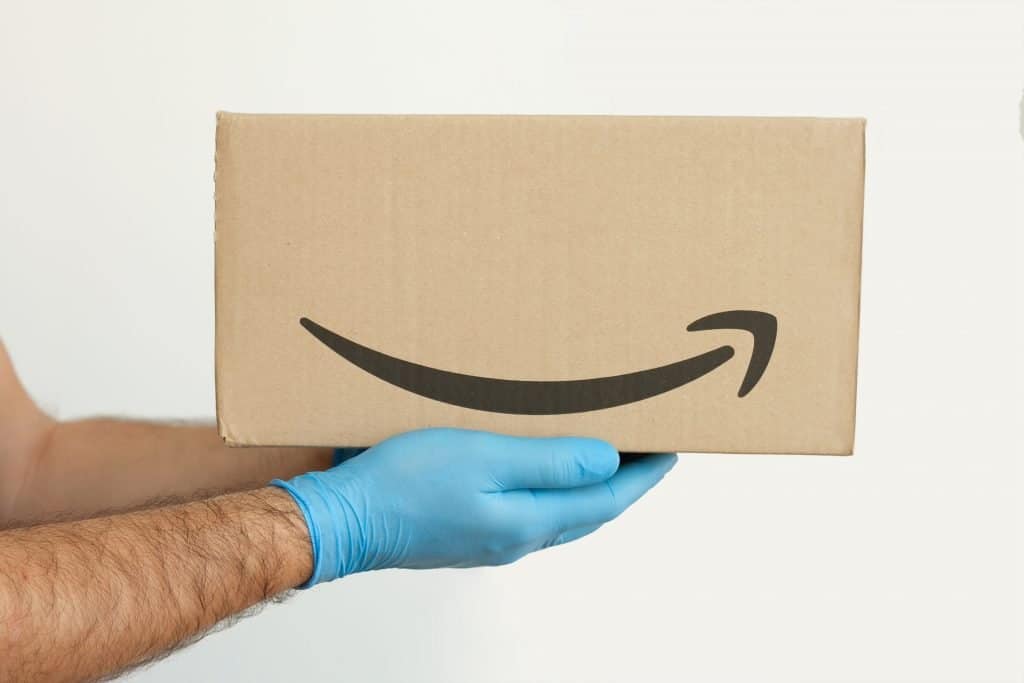
Since the World Health Organization (WHO) declared ‘a global health emergency’, the coronavirus outbreak has wreaked havoc on an unparalleled scale. Big companies like Amazon had to act quickly in order to cater to the needs of millions of buyers who entered into a ‘panic-buying’ state triggered by their country’s sudden quarantine orders.
For the first time in several years, Amazon fell short on its delivery times, prompting the tech giant to implement a range of unprecedented measures to ensure that their customers would still receive their products in a timely manner despite the adversity.
We will walk you through some of the most critical moments of the past few months and the way Amazon has responded to provide customers and sellers with a glimpse of hope during these difficult times.
1. Protecting Employees and Communities
February 28th, 2020
Amazon announced that it would cancel large events, moving its annual shareholders meeting online and pausing tours of their fulfillment centers and headquarters. Also, they started to hold virtual job interviews and increased the frequency of cleaning and sanitizing all of their facilities globally.
By that time, global markets were already at their worst since the 2008 crisis, there had been more than 83,000 global cases and over 2,800 deaths worldwide. – CNN
Just a couple of days prior to Amazon’s announcement, the WHO reported that, as of February 23rd, there were 35 confirmed cases in the US and 9 in Canada.

After the WHO’s report on February 23rd, the US confirmed, on February 28th, that the number of cases had spiked from 35 to 64. – CNN
2. Amazon Employees Encouraged to Work from Home
March 6th
Amazon recommended its employees, who could work from home, to do it so. To those employees which the nature of their work didn’t allow them to stay at home, the ecommerce giant reassured them that they would still have access to all their paid and unpaid time-off benefits.
On that same day, more than 300 coronavirus cases were confirmed in the United States. The World Health Organization reported the world was nearing 100,000 confirmed cases while the Johns Hopkins University – America’s first research university – announced that we’d already surpassed that number. – CNN
3. Amazon Donations and Small Business Funds
March 9th
Amazon donated $1 million to a COVID-19 Response Fund, hosted by the Seattle Foundation, to help those in need, without sick leave or health insurance, medically fragile individuals, and health workers.
Simultaneously, Giuseppe Conte, Italy’s Prime Minister announces the extension of the country’s lockdown until April and travel restrictions.
March 10th
The tech giant unveiled its $5 million Neighborhood Small Business Relief Fund to help small businesses in Seattle that could meet the following requirements:
- businesses with fewer than 50 employees or less than $7 million in annual revenue,
- businesses with a physical presence within a few blocks of Amazon’s Regrade or South Lake Union offices, and
- businesses opened to the general public, and that relied on foot traffic for customers.
Also, Amazon subsidized two full months of rent for tenants in Amazon-owned buildings.
March 11th
Amazon established a $25 million Amazon Relief Fund, aiming to support:
– their independent delivery service partners and their drivers,
– Amazon Flex participants, and
– seasonal employees under financial distress during the pandemic.
These grants would equal up to two weeks of pay if diagnosed with COVID-19 or placed into quarantine.
April 3rd
Amazon donated £21million (almost $23 million USD) to support organizations in Europe, supporting those most affected by the COVID-19 crisis, including the Red Cross organizations in the UK, Germany, France, Spain, and the Civil Protection Department in Italy.
4. Unattended Delivery Options

March 15th
In order to follow social distancing measures, Amazon announced that customers ordering delivery from Prime Now, Amazon Fresh, and Whole Foods Market would be able to specify the drop-off location by selecting ‘unattended delivery’, except for orders containing alcohol.
By that time, deaths in Spain had more than doubled in a day and the number of infections reached 8,000. In Italy, the number of infected had risen from 2,853 to 20,603, and Germany was about to close its borders with France, Austria, and Switzerland, except for goods traffic and commuters. – The Guardian
5. Amazon Hiring More People, Increasing Pay, and Adjusting Grocery Store Hours
March 16th
To help meet the high demand, to support existing employees, and to employ those who had lost recently lost their jobs due to the pandemic, Amazon increased pay in the US, UK, Canada, and many European countries. Also, the ecommerce behemoth hired 100,000 new full and part-time employees across the US, extending the increased hourly pay through May 16.
Amazon specified:
“These extensions increase our total investment in pay during COVID-19 to nearly $700 million for our hourly employees and partners. In addition, we are providing flexibility with leave of absence options, including expanding the policy to cover COVID-19 circumstances, such as high-risk individuals or school closures. We continue to see heavy demand during this difficult time and the team is doing incredible work for our customers and the community.”
Day One, The Amazon Blog
Whole Foods
Whole Foods Market temporarily adjusted store hours to provide service to customers who are age 60 and over in the Us and Canada – and age 70 in the UK – one hour before the store opens to the general public to be able to acquire their goods in a less crowded environment.
March 28th
Amazon encouraged Lyft drivers to apply for roles in its fulfillment centers to support grocery and package deliveries.
6. Prioritizing Essential Items and No-Rush Shipping

March 17th
This is, by far, one of the most drastic measures Amazon had to take in order to help ensure the safety of its associates and to support government policies, regarding the ongoing services of essential businesses.
When Amazon announced that they would be adjusting their logistics, transportation, supply chain, purchasing, and third-party seller processes to prioritize stocking and delivering higher-priority items until April 5, sellers and vendors were of course taken by surprise.
This is how Amazon handled the situation:
“We are seeing increased online shopping, and as a result some products such as household staples and medical supplies are out of stock.
With this in mind, we are temporarily prioritizing household staples, medical supplies, and other high-demand products coming into our fulfillment centers so that we can more quickly receive, restock, and deliver these products to customers.
For products other than these, we have temporarily disabled shipment creation. We are taking a similar approach with retail vendors. Shipments created before today will be received at fulfillment centers.…We understand this is a change to your business, and we did not take this decision lightly. We are working around the clock to increase capacity…”
Amazon Seller Central
No-Rush Shipping
On that same day, customers were introduced to No-Rush Shipping. By selecting this option, Amazon shoppers were able to continue to order non-essential items while allowing Amazon to serve customers with the most critical needs first.
Toilet Paper Shortage
Coincidentally, supermarkets across the world experienced an unprecedented toilet paper shortage. People were buying up to 10 bags per family, which led supermarket chains to implement new restrictions, limiting the amount of toilet paper bags one person could buy at once.
7. Amazon Combating Price Gouging
March 23rd
Due to the recent non-essential items’ restrictions, some unethical Amazon sellers and vendors engaged in price gouging of products related to COVID-19.
Amazon suspended more than 3,900 selling accounts, in their US store alone, for violating its fair pricing policies. These sellers were charging thrifty prices on products and shipping.
Amazon responded to this issue by stating the following:
“…We’re working vigorously to combat price gouging by making clear to all of our sellers our longstanding policies that ensure fair pricing, monitoring our stores 24/7 though both automated and manual means and aggressively removing bad actors and offers, collaborating with federal, state, and local law enforcement agencies and policymakers to hold price gougers accountable, and staying focused on our customers and protecting their interests.”
Closing Thoughts
During the month of April 2020, Amazon continued donating millions of dollars to fight this pandemic to organizations in countries where the company operates.
The tech giant’s competitive and resilient spirit has proven us, once again, that it is able to adapt to any circumstance and that Bezo’s customer-obsessed approach has led him to sacrifice short-term profit for long-term gain.
While the damages and loses caused by the rapid spread of this illness have left millions of families not only mourning their beloved ones but also wondering when they will be able to recover financially, companies like Amazon are proving that there’s a light at the end of the tunnel and that new jobs and ways of doing business are already emerging at the root of this crisis.
Additional read: Adapting Your Amazon Business In the Time of Coronavirus



